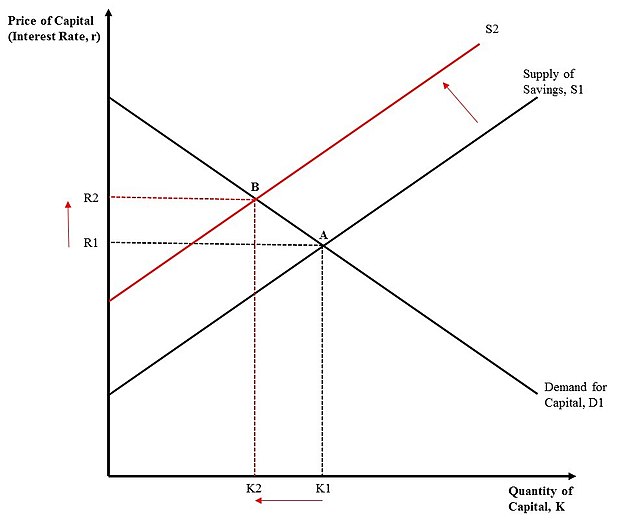Government spending or expenditure includes all government consumption, investment, and transfer payments. In national income accounting, the acquisition by governments of goods and services for current use, to directly satisfy the individual or collective needs of the community, is classed as government final consumption expenditure. Government acquisition of goods and services intended to create future benefits, such as infrastructure investment or research spending, is classed as government investment. These two types of government spending, on final consumption and on gross capital formation, together constitute one of the major components of gross domestic product.
Dalton's Principle of Maximum Social Advantage. Graph showing point of Maximum Social Advantage at point "P"
The Market for Capital (the Loanable Funds Market) and the Crowding Out Effect. An increase in government deficit spending "crowds out" private investment by increasing interest rates and lowering the quantity of capital available to the private sector [sic].
A country's gross government debt is the financial liabilities of the government sector. Changes in government debt over time reflect primarily borrowing due to past government deficits. A deficit occurs when a government's expenditures exceed revenues. Government debt may be owed to domestic residents, as well as to foreign residents. If owed to foreign residents, that quantity is included in the country's external debt.
Total (gross) government debt as a percent of GDP by IMF



